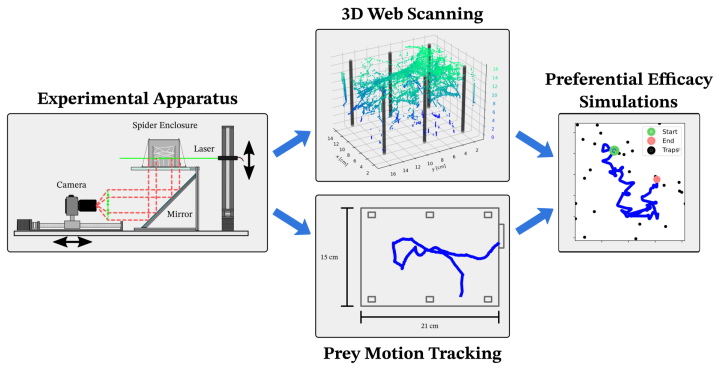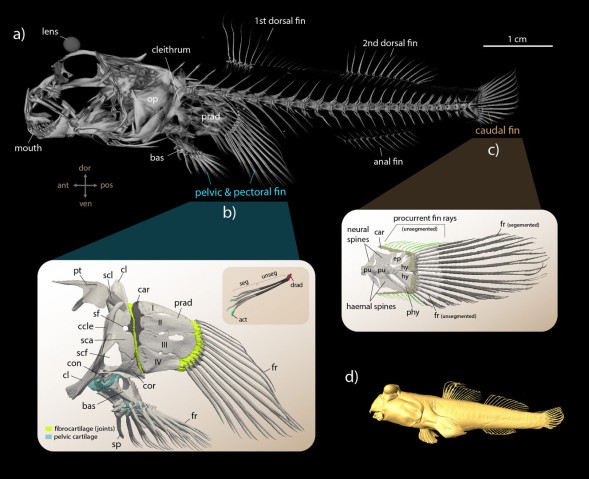Nonlinear and Non-equlibrium Physics Unit
Professor Mahesh M. Bandi
Abstract
We are an experimental group with primary interests in nonlinear and non-equilibrium physics, both applied and fundamental. Our work often intersects with soft matter physics, applied mathematics, mechanics, and their application to biologically inspired problems. Our current focus is trained towards problems in interfacial fluid dynamics, granular solids, biomechanics and fluctuations in renewable energy sources.
1. Staff
- Ms. Yoko Shintani, Group Administrator.
- Dr. Christian Vaquero-Steiner, Postdoctoral Scholar.
- Dr. Hirokazu Maruoka, Postdoctoral Scholar.
- Dr. Keiko Aoki, Visiting Researcher (OIST Domestic Visitors Program)
- Prof. Michael Jack, Visiting Researcher (on sabbatical from Univ. of Otago, New Zealand).
- Dr. Jonas Rønning, Postdoctoral Scholar.
- Diya Shaji, Research Intern
- K Horisberger, Volunteer Technical Staff.
- Clara Ferrera-Corres, Research Intern.
- Veronika Leonie Bachleitner, Research Intern
- Jack Featherstone, PhD Student
- Aditya Singh, PhD Student
- Diala Joy Edde, PhD Student
- Kha-I To, Postdoctoral Scholar
- Fabienne Ziadi, Postdoctoral Scholar
- Chien-chia (Soda) Liu, Staff Scientist
- Ayano Sakiyama, RUA
- Mahesh M. Bandi, Professor
2. Collaborations
2.1 Popping Instability in Granular Media
- Description: Experimental characterization of a dynamical transition between two kinds of granular instabilities from buckling to popping.
- Type of collaboration: Joint research
- Researchers:
- Mr. Akash Ghosh, Graduate Student, Tata Institute of Fundamental Research, Mumbai, India.
- Prof. Shankar Ghosh, Professor, Department of Condensed Matter Physics and Materials Science, Tata Institute of Fundamental Research, Mumbai, India.
- Prof. Mahesh Bandi, Nonlinear and Non-equilibrium Physics Unit, OIST Graduate University
2.2 Transcriptomics of Mudskipper fin metamorphosis
- Description: Genetic analysis of regulatory pathways and gene expression networks active during mudskipper larval metamorphosis
- Type of collaboration: Joint research
- Researchers:
- Dr. Fabienne Ziadi, Nonlinear and Non-equilibrium Physics Unit, OIST Graduate University
- Prof. Vincent Laudet, Marine Eco-Evo-Devo Unit, OIST Graduate University
- Prof. Mahesh Bandi, Nonlinear and Non-equilibrium Physics Unit, OIST Graduate University
2.3 Electrical consumer load fluctuations
- Description: Nonlinear and statistical time-series analysis of the fluctuations in electrical consumer demand using real-world and simulated data sets.
- Type of collaboration: Joint research
- Researchers:
- Dr. Ambarish Nag, National Renewable Energy Laboratory, Golden Colorado, USA.
- Prof. Jay Apt, Carnegie Mellon University, Pittsburgh, PA, USA.
- Mr. Sayan Mitra, Research Intern, Nonlinear and Non-equilibrium Physics Unit, OIST Graduate University
- Prof. Mahesh Bandi, Nonlinear and Non-equilibrium Physics Unit, OIST Graduate University
3. Activities and Findings
3.1 Predator-Prey Interactions of Latrodectus Spiders
Spiderwebs are fantastically versatile and complex dwellings, hunting tools, and defensive mechanisms, with structures that vary from the familiar 2D circular pattern of an orb weaver to seemingly-random 3D tangles built by cobweb spiders. Beyond this simple dichotomous classification, web structure -- and thus function -- varies drastically depending on the arachnid's biology, environmental conditions, and even day-to-day factors like hunger. We are interested in investigating these relationships, especially as they apply to prey capture efficacy, for spiders of the Latrodectus genus, which includes the (im)famous Australian redbacks and North American black widows.
Unlike most other Theridiid, or cobweb, spiders, Latrodectus spiders focus their prey capture efforts on ground-based insects, other arthropods, reptiles, and even small mammals. By placing glue at the bottom of vertically-oriented, "gumfooted threads", passerby prey that blunder into them become stuck, allowing the spider to "fish" them up at its convenience.
As a part of this project, we look to first describe the geometry and topology of these peculiar web structures by making fully three-dimensional scans of webs built in captivity. This would be the first complete, quantitative structural description of this web phenotype, and could be used to investigate, for example, how these spiders triangulate prey via vibrations.
3.2 Mudskipper fin anatomy and metamorphosis
In contrast to their aquatic relatives, mudskippers disperse over land in a synchronous, appendage-based mode of locomotion, termed ‘crutching’. Members of the genus Periophthalmus have further enhanced this ambipedal mode of progression using lobe-like pectoral fins (homologs to the forelimbs) by arching the body and concurrently folding the caudal fin to clear the surface.
While other forms of semi-terrestrial locomotion exhibited by ray-finned fishes have evolved independently multiple times within ray-finned fish (Actinopterygii), the crutching mode of locomotion is distinct from other amphibious fishes and appears to be unique to mudskippers. The ability of mudskippers to perform a variety of motor behaviors between environments with fundamental physical disparities (e.g. density, viscosity, gravitational load) has significant consequences for the design and functional roles individual fin muscles play during particular locomotor movements and is crucial for their survival.
A) We use iodine-based micro-computed X-ray tomography to generate 3D musculoskeletal reconstructions, enabling detailed examination of mudskipper locomotor fins.
We observed significant remodeling in the musculature of pectoral fins during larval metamorphosis, indicating a divergence from the conventional fin architecture seen in other ray-finned fish. This provides an exceptional opportunity to study evolutionary mechanisms in real-time that underlie mudskippers' unique terrestrial capabilities while retaining their aquatic functionality.
B) We employ transcriptomics to investigate the regulatory pathways and gene expression networks active during the metamorphosis of mudskipper fins.
4. Publications
4.1 Journals
- Ziadi-Künzli, F., Ken, M., Puchenkov, P., & Bandi, M. M. (Under review). Anatomical insights into fish terrestrial locomotion: a study of barred mudskipper (Periophthalmus argentilineatus) fins based on μCT 3D reconstructions. Journal of Anatomy.
- Gutnick, T., Neef, A., Cherninskyi, A., Künzli-Ziadi, F., Di Cosmo, A., Lipp, H.P. and Kuba, M. Recording electrical activity from the brain of behaving octopus, Current Biology, 2023 (doi.org/10.1016/j.cub.2023.02.006)
- Bel, G., and Bandi, M. M. Spectral analysis of solar irradiance fluctuations, Phys. Rev. Applied 21, 034019 (2024). https://doi.org/10.1103/PhysRevApplied.21.034019
4.2 Books and other one-time publications
Nothing to report
4.3 Oral and Poster Presentations
- Fabienne Ziadi-Künzli, "Anatomy of adaptation: exploring the internal structure of locomotor fins in the terrestrial mudskipper, Periophthalmus argentilineatus, using contrast-enhanced μCT", Indo-Pacific Fish Converence (IPFC), 2023 November 20-24, Auckland, New Zealand.
- Jack Featherstone, "Quantifying the Structure of Latrodectus Spiderwebs" ICTS, Soft and Living Matter; 2023 August; Bangalore, India.
- Jack Featherstone, "Geometry and Structure in Spiderwebs" NC State University, Complex Matter and Biophysics Seminar; 2023 May 17; Raleigh, NC USA.
- Kha-I To, "Rifts in Rafts: Distributed Failure and Cluster Formation of Particle Rafts under Expansion", 2023 Taiwan Physical Society Annual Meeting. Jan. 17, 2023.
- M. M. Bandi, "Spectrum of Wind Power Fluctuations" Department of Physics, Pennsylvania State University, October 2023.
- M. M. Bandi, "Masking it all up: Two soft matter solutions for COVID-19 pandemic", Institute of Physics, Academia Sinica, Taiwan. December 2023.
5. Intellectual Property Rights and Other Specific Achievements
Nothing to report
6. Meetings and Events
- Seminar by Prof. G. V. Pavan Kumar, IISER Pune, India "Soft Matter in Opto-Thermal Gradients : Evolutionary Dynamics and Pattern Formation" April 2023.
- Discussion Meeting: Soft Matter and Statistical Physics, organized by Mahesh M. Bandi at OIST, Japan. June 26-30, 2023. Link: https://groups.oist.jp/nnp/discussion-meeting-soft-matter-non-equilibrium-physics
- Summer School on "Soft and Living Matter: From Fundamental Concepts to New Material Design" organized at the International Centre for Theoretical Sciences, Bengaluru, India. 07-25 August, 2023. Co-organized by Prof. Ranjini Bandyopadhyay, Raman Research Institute and Prof. Mahesh M. Bandi, OIST Graduate University. Link: https://www.icts.res.in/program/SLM2023
- Seminar by Prof. Kazumasa Takeuchi, Dept. of Physics, University of Tokyo, "A micro-perfusion system for characterizing dense bacterial populations". December 5, 2023.
- Seminar by Prof. Michael Jack, Univ. of Otago, "Non-equilibrium statistical mechanics of molecular-scale energy conversion" December 13, 2023.
- Tutorial by Dr. Keiko M. Aoki, "Stress control molecular dynamics simulation methods designed for simulating soft matter" January 2024.
7. Other
Nothing to report.









